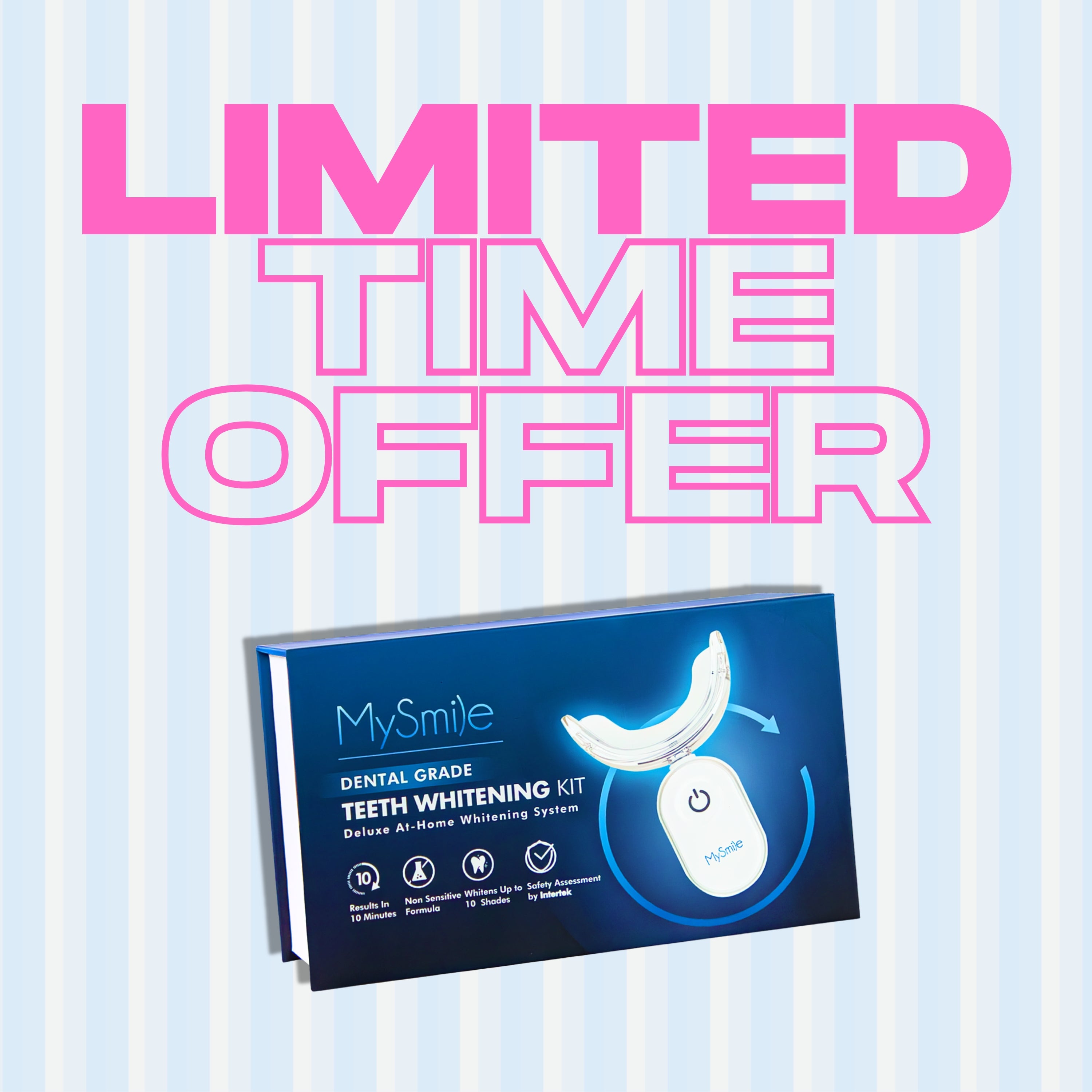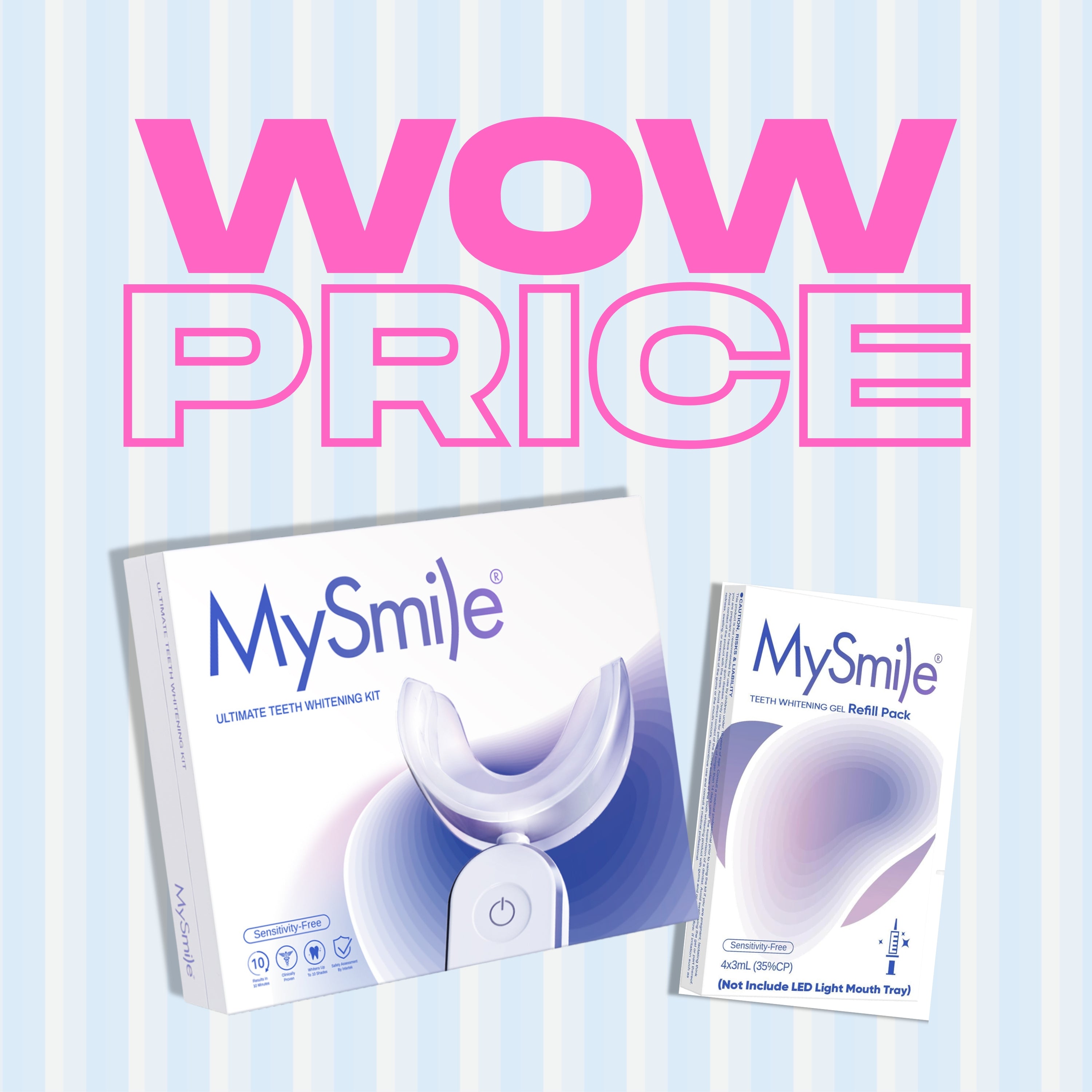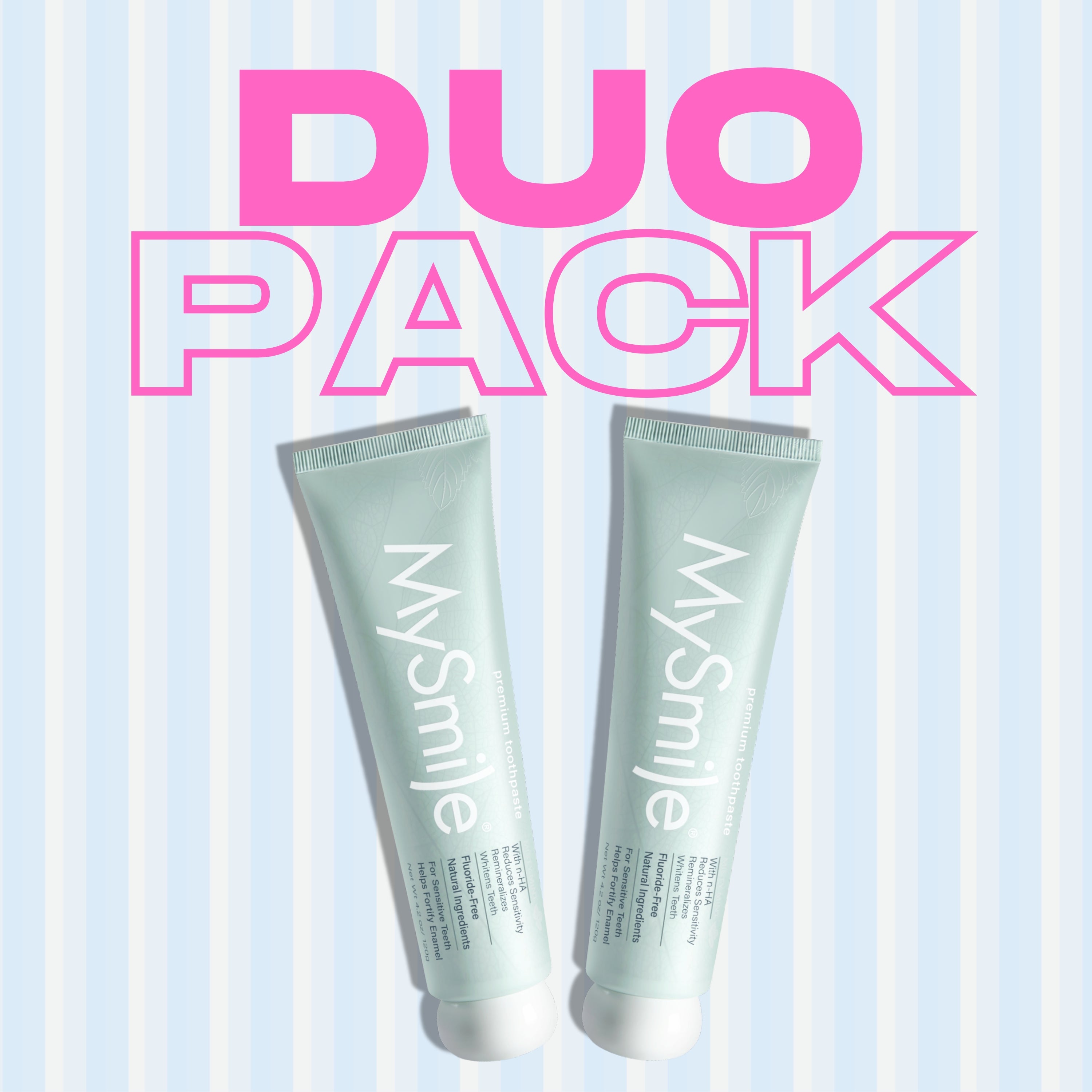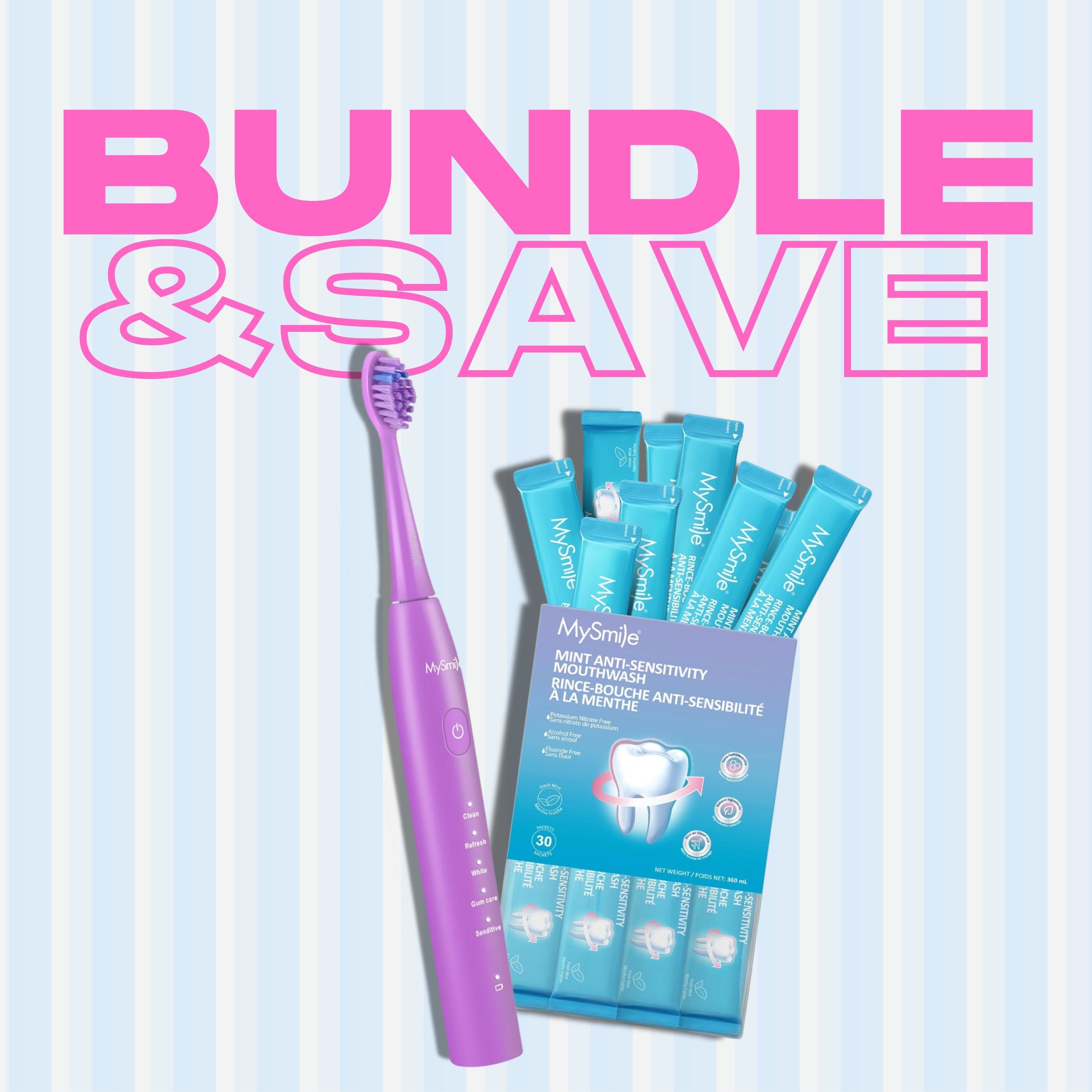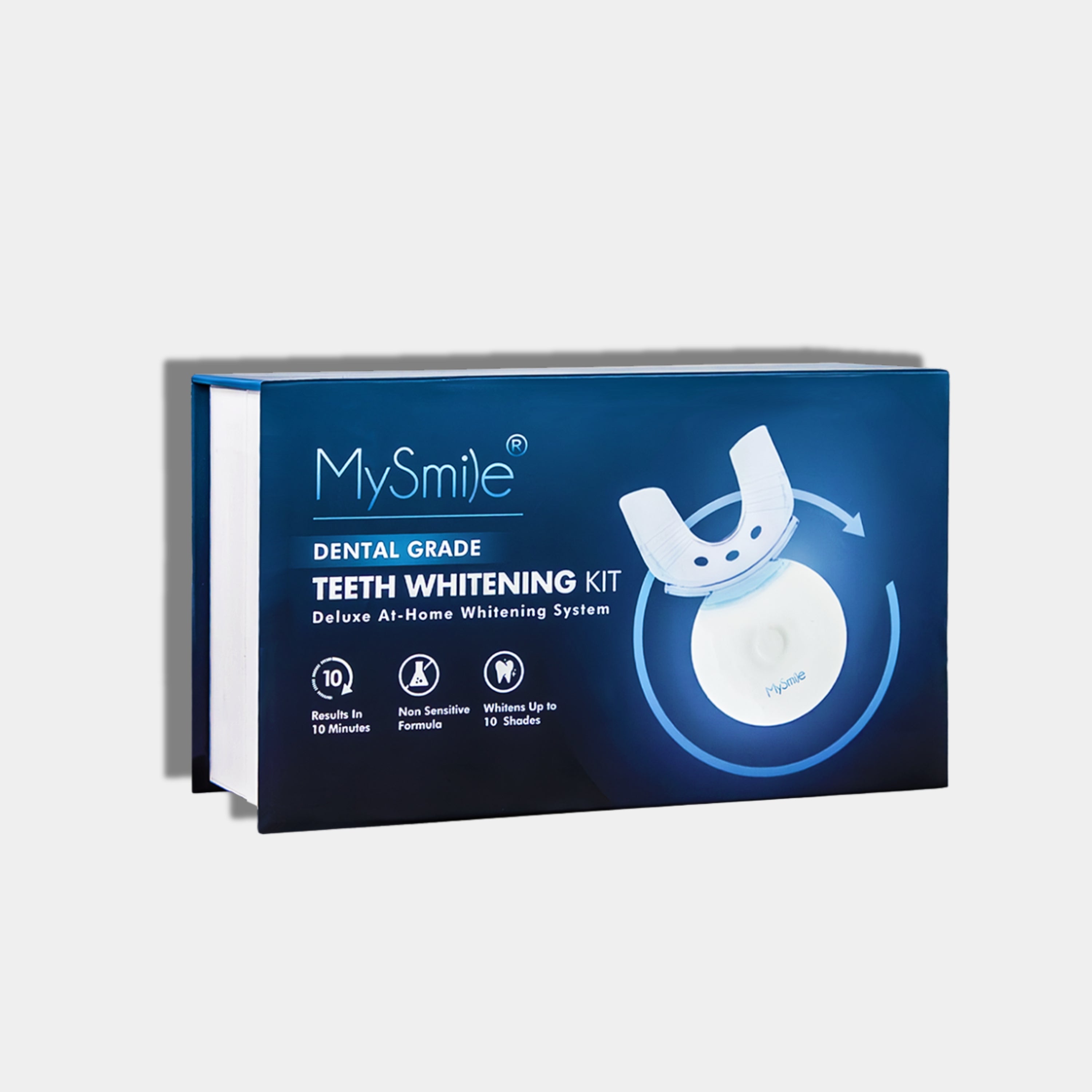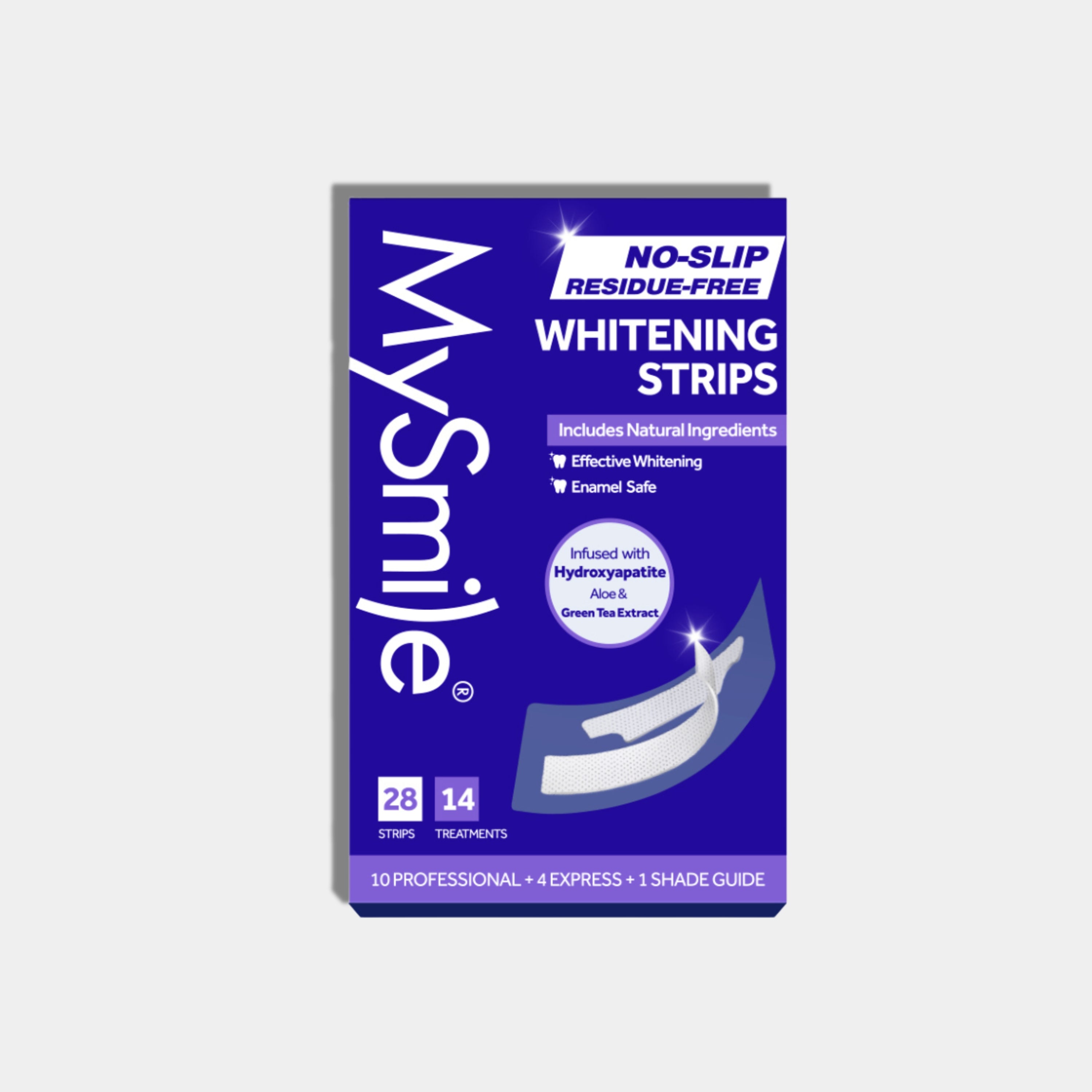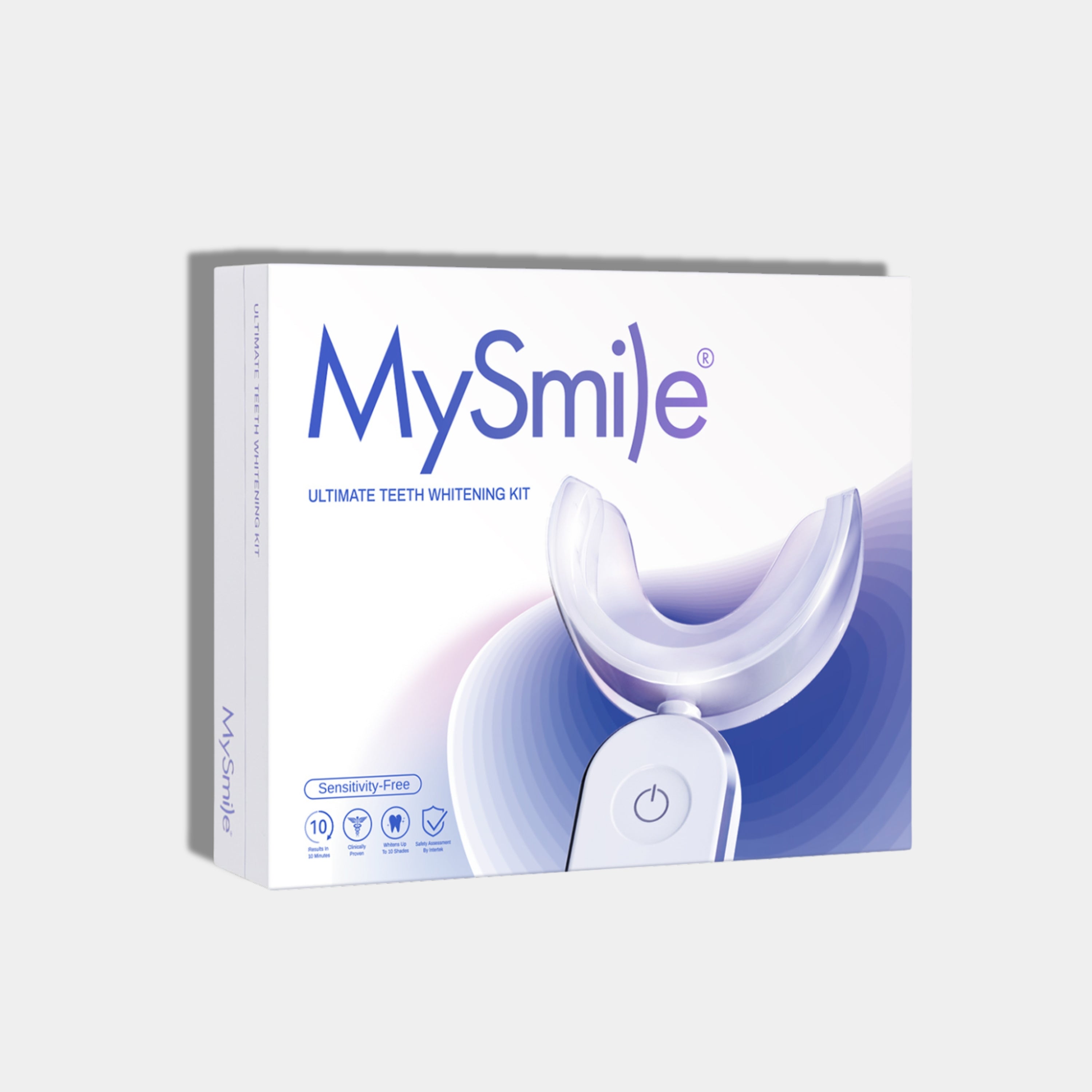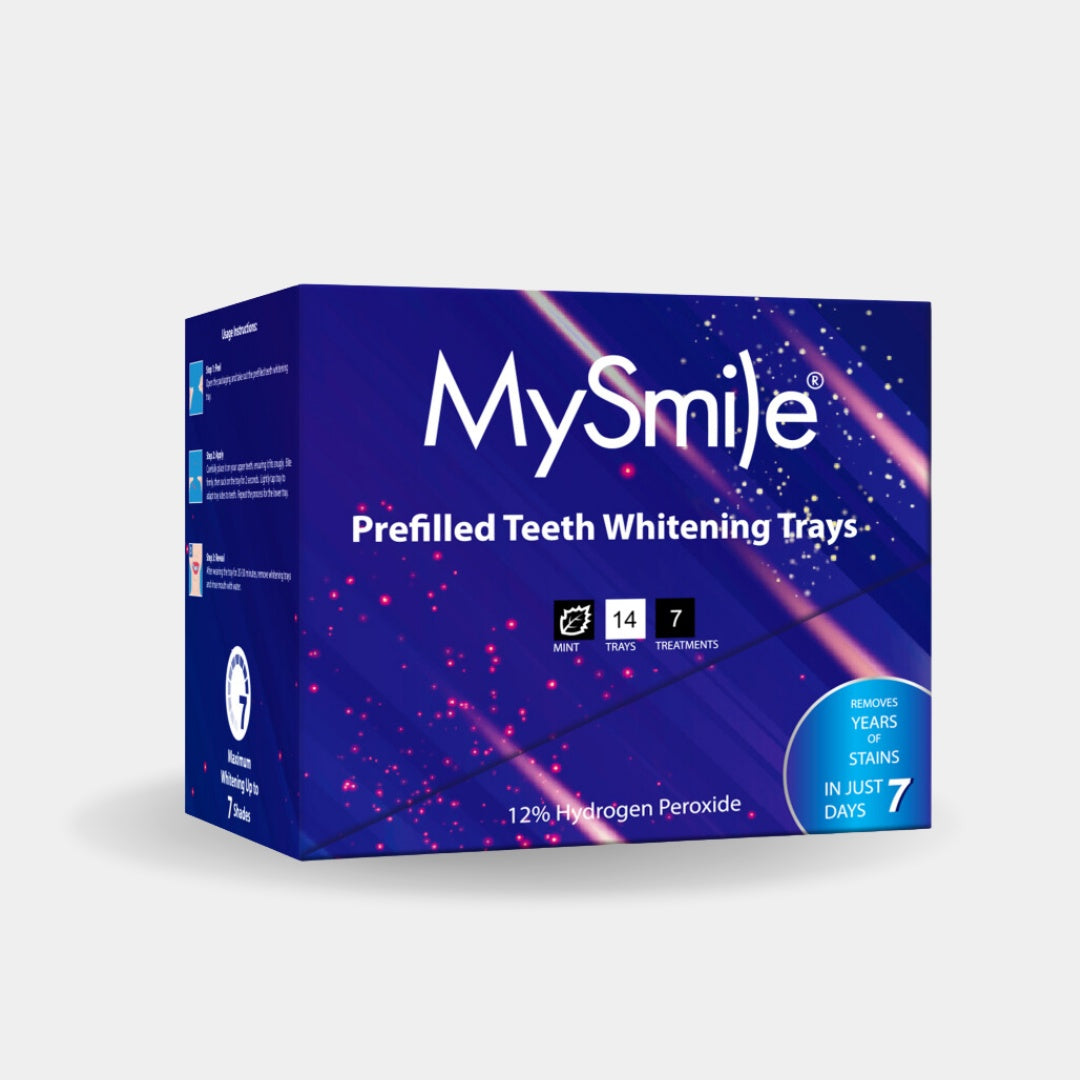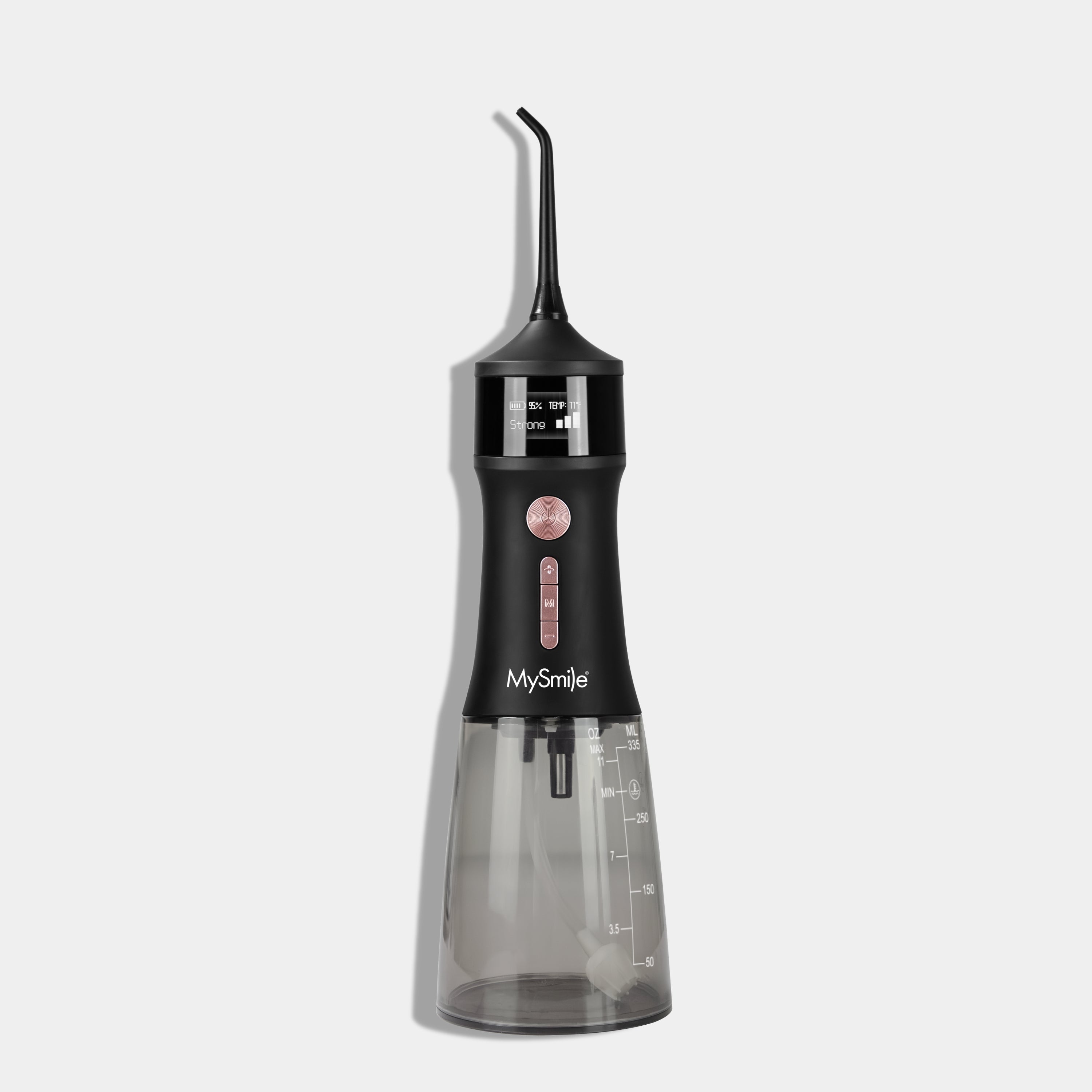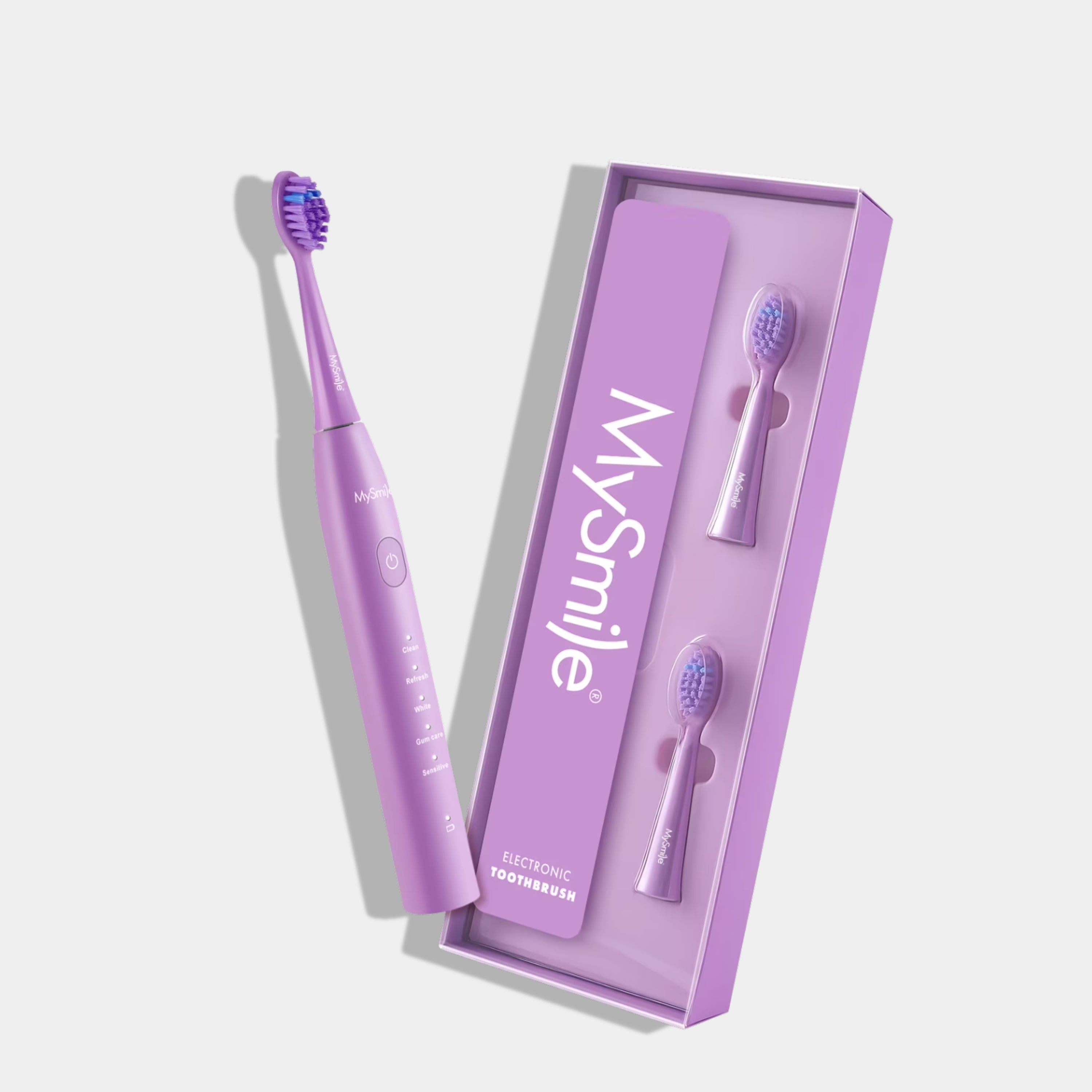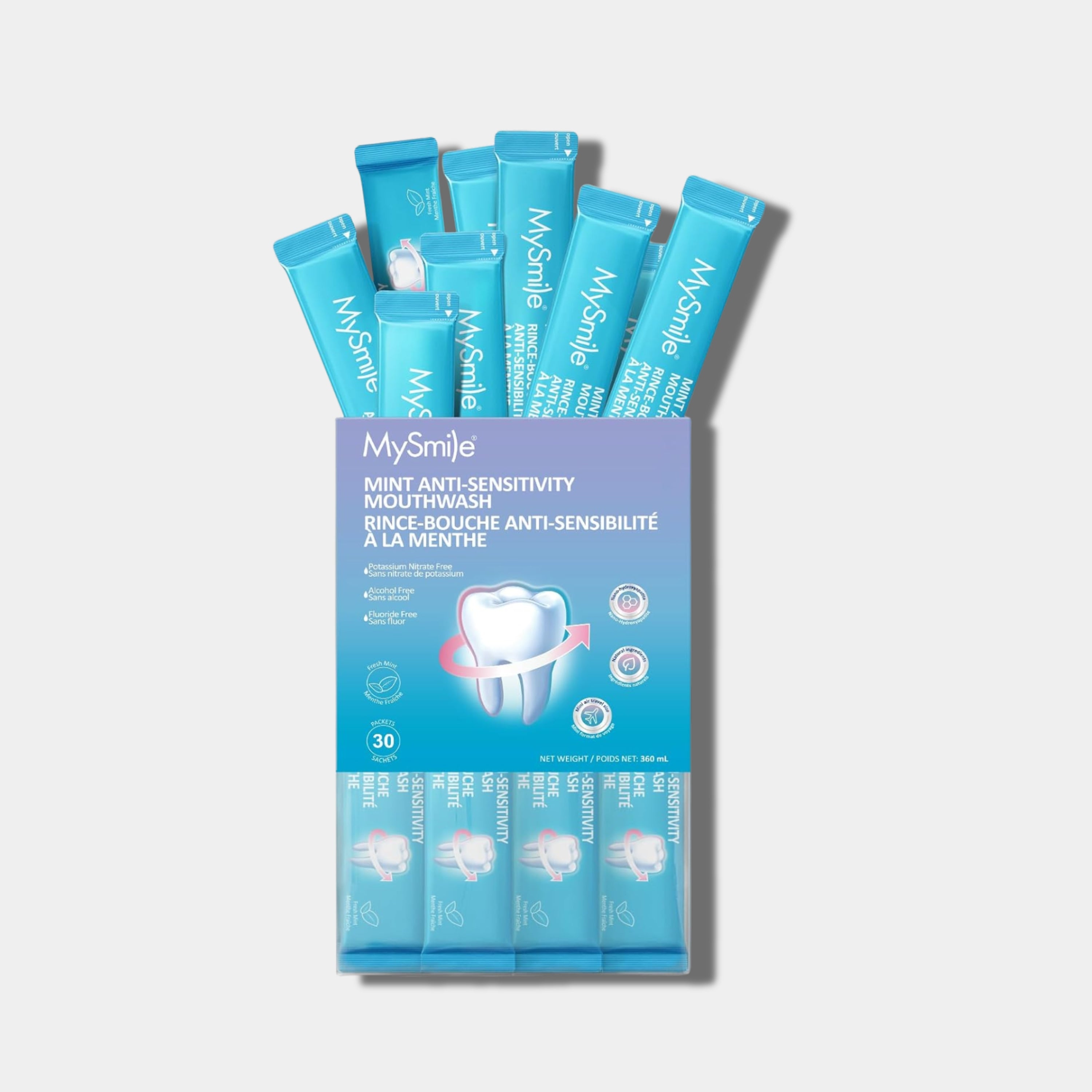Having shinier teeth has become easier because of the numerous whitening products. But it can be pretty daunting to choose one that works best for you. If you are among them, then don't worry! We have brought you the perfect article where you can compare the most popular teeth whitening products, whitening pens vs strips, and select one that suits your needs the most.
Teeth whitening is not a new procedure that is trending these days. People in the 1980s were more eager to make their teeth whiter and brighter by using different tools and hacks. However, teeth whitening gels and creams prepared by dental professionals got hype due to their instant results and effectiveness.
Since time has passed, at-home teeth whitening kits have become famous. They come in numerous shapes, like pens and strips, so you can brighten your teeth in the comfort of your home. One such effective and popular type of teeth whitening procedure is pen and strips. Both products use hydrogen peroxide, which has proven safe and effective for teeth whitening.
Whitening Pens vs. Strips: Which is the Better Choice?
There is a lot of debate about which product is better than which. Some prefer teeth whitening pens, while others are inclined more toward strips. To end this debate, let's dive deep into both and learn which product is better and works the best to make your smile brighter.
-
Teeth Whitening Pens
Teeth whitening pens are typically small, disposable tubes filled with hydrogen peroxide or carbamide peroxide-based gel. You simply twist the bottom to release the gel onto a small brush or applicator, which is applied directly to your teeth. It is easier to use because you can directly target the stain and get adequate results without affecting the neighboring teeth. The benefits of using a pen for teeth cleaning are
-
Portability
Generally, whitening pens are small and come in travel size, making them easier to carry anywhere. Whether you are holidaying in Miami or having a corporate meeting in Texas, you can just take this pen and remain confident with your sparkling smile.
-
Fast Acting
You may wonder if teeth whitening pens work like any other product. Unlike other products, these pens give you instant results. You don't have to wait 30-40 minutes after applying them. Apply them to your teeth and get shiny teeth in a few minutes.
-
Controlled Dosage
You can precisely control the dosage with a pen because teeth whitening pen targets the stain directly. This helps prevent product wastage and ensures the best results every time.
-
Minimal Tooth Sensitivity
Are teeth whitening pens safe for sensitive teeth? Whitening pens are the holy grail for people with sensitive teeth. They only target the stained area and do not affect the neighboring teeth.
-
Teeth Whitening Strips
Teeth whitening strips are thin plastic strips coated with hydrogen peroxide or carbamide peroxide-based gel. They are incredibly simple to use. You just peel them, apply them to your teeth, and leave them on for a specified time. In 5 to 30 minutes, you get shinier teeth, boosting your confidence to a great extent. Experienced dentists say strips are sometimes more effective on stained or discolored sensitive teeth. Some of its perks are
-
Uniform Coverage
The strips are designed to adhere to the contours of your teeth, ensuring that each tooth is evenly exposed to the whitening agent. This can result in a consistent whitening effect.
-
Longer Lasting Results
The most common question is, "Do teeth whitening strips work?" Yes, and the results last longer than the pen. The strips effectively soak the teeth with whitening agents, allowing deeper penetration and longer-lasting brightness.
-
Cost-Effective
Considering the effectiveness and duration of the results, teeth whitening strips often provide a substantial return on investment.
-
Minimal Mess
Unlike gels and some pen applicators, which can drip and create a mess, strips contain the whitening agent within a fixed area. This design minimizes any potential mess, making the process cleaner and more comfortable.
In-Depth Comparison of Teeth Whitening Strips or Pens
If you are still confused about what to choose for teeth whitening. Here is a comparison covering numerous aspects to purchase one that suits your requirements and budget accordingly. The comparison is
-
Effectiveness
Whitening strips are more effective, contain more active ingredients, and deliver quicker and longer-lasting results.
Whitening pens require multiple applications and take longer to show noticeable improvements.
-
Cost
Whitening strips are more affordable, typically costing $20-$30 for multiple applications.
However, whitening pens are even more affordable, usually around $15-$25 per pen, but give fewer applications.
-
Quality of Ingredients
Some whitening strips may use chlorine dioxide, which can harm enamel and cause sensitivity.
Meanwhile, whitening pens generally contain higher-quality ingredients, like hydrogen peroxide or carbamide peroxide, offering more effective and safer results.
-
Convenience
Whitening strips require more time to apply and remove, but they offer full coverage.
Conversely, whitening pens are portable and easy to apply anytime, anywhere, making them more convenient for quick touch-ups.
-
Treatment Time
Whitening strips work faster, typically showing results in 1-2 days.
On the contrary, whitening pens take longer, often needing daily applications for 2 weeks to achieve the desired results.
-
Application Specificity
Whitening strips provide broader, general coverage but lack precision for specific areas.
However, whitening pens allow for more targeted, precise application and are beneficial for focusing on specific areas.
| Product | Effectiveness | Cost | Quality of Ingredients | Convenience | Time to Show Results | Portability |
|---|---|---|---|---|---|---|
| Strips | Fast results | $20-$30 | May contain harsh chemicals affecting enamel | Slightly more challenging to apply | 1-2 days | Portable but may be messy |
| Pen | Gradual results | $15-$25 | Gentle on enamel, safe for teeth | Easy to use | Around 2 weeks | Highly portable |
Are Whitening Pens And Strips Effective?
When seeing visible results in less time, whitening strips have a little upper hand. However, the pens work well for touch-ups on specific spots, while the strips cover more surface, making them better for overall whitening. Both have the same component, hydrogen peroxide, as their core ingredient, ideal for getting whiter teeth. In short, both products are effective and helpful for getting a shinier smile in the comfort of your home.
Will My Teeth Get Sensitive Using Whitening Pens Or Strips?
Most people do not face any sensitivity while using a whitening pen or strip. However, since most whitening strips contain chlorine dioxide, a bleaching agent that removes stains instantly, it can cause sensitivity in a few peope. If you face teeth sensitivity like sharp, temporary pain or discomfort, leaving all teeth whitening products instantly is advisable. Moreover, you must always choose a product with safer and more effective ingredients like hydrogen peroxide or carbamide peroxide.
Are The Quality Of Ingredients In Whitening Pens And Strips Trustworthy?
If you get a whitening strip or pen from a credible brand, you can trust the ingredients. However, you must check the ingredients to get a suitable product for teeth whitening. Most products contain hydrogen or carbamide peroxide, which are best for whitening.
Conversely, some have active ingredients like sodium bicarbonate and potassium nitrate, which are also safe for oral health. You must avoid products that contain chlorine dioxide, which can damage the dentin and enamel of your teeth. To remain vigilant, check the ADA (American Dental Association) Seal, which indicates they’ve been tested for safety.
How Long Will It Take To See Results?
The answer to this question depends on which option you use. Teeth whitening pens typically take a few weeks, while strips often show results in as little as one week. This is because the application time for pens is generally much longer.
Does Insurance Cover Whitening Pens And Strips?
No, most insurance plans do not cover teeth whitening treatments. The cost of using a whitening pen or strips will vary depending on your product type. Generally, whitening pens are more expensive than strips, depending on your chosen brand.
Are Whitening Pens Better Than Strips?
This depends on you and your unique needs. Whitening pens are convenient to use and highly portable. They offer a more targeted approach to whitening, which is especially useful for those with sensitive teeth or gums.
Whitening strips provide more even coverage across your entire mouth, making them ideal for large areas of discoloration. Ultimately, it comes down to what works best for you. If you have trouble deciding, consult your dentist to determine the best method.
How Long Should You Leave A Whitening Pen On Your Teeth?
Whitening pens should be left for just a few seconds. Using a pen, you can directly target the stain, and the gel can start its action in a few seconds. After applying the gel, use a soft brush to spread it evenly on the teeth. After brushing your teeth, spit out the extra gel and rinse your mouth with clean water. Generally, one daily application will effectively show results in a few days.
What’s The Difference Between Zoom And Laser Teeth Whitening?
If you are looking for more professional in-house teeth whitening methods, Zoom and Laser are at the top of the list. Both methods use bleaching agents to clean the stains. However, here are some of the differences.
The zoom method activates a 25% hydrogen peroxide gel with ultraviolet (UV) light. It quickly targets deep stains and discoloration. Each session takes about 45 minutes, and some may need multiple sessions. Moreover, the results can last up to three years with proper care.
On the other hand, laser teeth whitening uses laser technology to activate a bleaching agent (10–35% hydrogen peroxide). Depending on stain severity, it typically takes longer than Zoom, around two hours. Moreover, it provides long-lasting results, often several years, with good maintenance.
What’s Better: Teeth Whitening Or Bleaching?
Another question arises: what is better, teeth whitening or bleaching? While some tend to take both terms as synonyms, let us tell you, these are both entirely different procedures.
Teeth Whitening uses special chemicals or gels to reduce surface discoloration. It makes teeth look whiter but doesn’t deeply penetrate the tooth. Teeth whitening is ideal for light stains and those with lower sensitivity.
Conversely, teeth bleaching uses a stronger solution that breaks down stain molecules in teeth. This method is more effective for deep stains and discoloration. However, it can cause sensitivity in some people, so it’s best for those with minimal sensitivity concerns.
What Are Dental Crowns And Veneers?
Dental crowns and veneers are two types of dental treatments used to restore the look of your teeth. Essentially, they are whitening options for severely discolored teeth that are not helped by over-the-counter or in-office whitening treatments.
There are some key differences between a dental crown vs veneer. Dental crowns are a type of restoration that encases the entire tooth, while veneers are thin shells that cover just the visible part of a tooth. Both help improve the shape and color of your teeth and protect them from further damage.
What Is Dental Bonding Compared To Veneers?
Dental bonding is a procedure in which a tooth-colored composite resin material is applied to the surface of the teeth and hardened with a special light. It is used to fix minor chips, gaps, or discolorations on the front teeth.
Veneers are thin layers of porcelain cemented over the front side of teeth for cosmetic purposes. While veneers help make your smile whiter and brighter, they cannot remove existing stains.
Which Teeth Whitening Method Should You Choose?
Choosing a teeth-whitening product entirely depends on your preferences, lifestyle, and needs. However, a few aspects can influence your decision. If you want to whiten your teeth, you must choose a teeth-whitening pen.
- You have to travel more and want something that helps you get results on the go.
- If you want precision and want to target the exact troubled teeth.
- If you can wait a little longer to get pristine results.
Whitening strips can be helpful if you
- You want instant results.
- You have maintained excellent oral health and are not worried about damaging your enamel.
- You have the time to dedicate to 20-30 minute treatments.
Wrapping Up
While choosing a teeth-whitening product can be daunting, comparing a whitening pen vs strip can answer many of your questions. The final decision entirely depends on your budget, preferences, and lifestyle. Both of these products are effective and capable of providing you with the best results in the shortest time possible. Consistent use of these products gives you a sparkling smile that helps you stand out in every gathering.
Whether you choose a pen or strip, My Smile Teeth is the best place to get them. We not only have strips and pens for teeth whitening but also offer other options to make your smile brighter and full of confidence. To get the perfect product for your shinier teeth, visit our website now!

